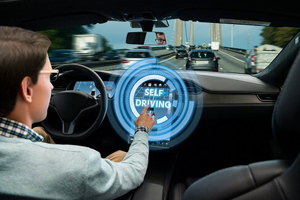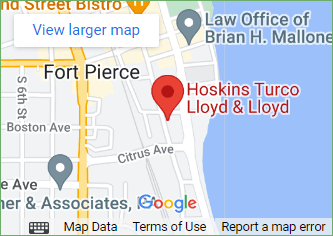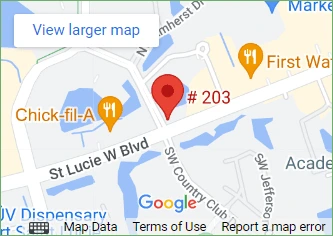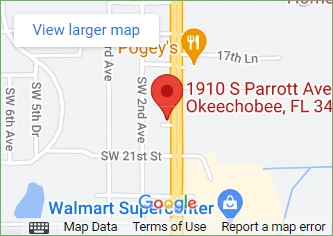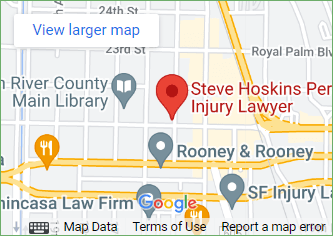Auto Accident Settlement
What are the risks of the increased dependence on self-driving technology?
As vehicles capable of partially autonomous operation continue to grow in popularity in the United States, we need to carefully evaluate the impact emerging self-driving technology could have on our lives. Just what are the risks of increased dependence on autonomous vehicles? How do accident victims navigate the legal system when a self-driving car is responsible for their crash?
If you have been involved in an accident with a self-driving vehicle, a Florida car accident lawyer from Hoskins, Turco, Lloyd & Lloyd can explain your options for filing an injury claim. A successful claim has the potential to result in full compensation for all of your accident-related damages.
Self-Driving Technology and the False Sense of Security
Autonomous cars of the future are often marketed as “driverless,” which implies the occupants do not need to be actively engaged while in motion. However, the self-driving technology that currently exists still requires drivers to participate in the act of driving. In fact, promotional materials, user manuals, and visible warnings on the vehicles’ display screens all indicate that drivers must be actively paying attention and ready to intervene.
There are three primary elements to driving: perception, computing, and control. Humans use their eyes, ears, brain, hands, and feet to operate a vehicle. All body parts need to be working together in order to drive safely. Self-driving cars use cameras, computers, and control electronics. Again, all aspects need to be working; however, having an active driver in a self-driving vehicle can potentially counteract any failing parts.
Nevertheless, people evidently place far too much confidence in the ability of these systems to take the task of driving off their hands, literally and figuratively. As a result of the driverless assumption, the majority of self-driving-related accidents have occurred because of driver inattention. No matter the degree of technology, drivers still need to be alert and ready to take control of the vehicle in the event of a sudden road change or emergency.
The Levels of Automation
According to the National Highway Transportation Safety Administration (NHTSA), there are six levels of vehicular automation. Understanding these levels and what they offer to drivers is essential to fully comprehending the capabilities of self-driving cars.
- Momentary Driver Assistance — The vehicle’s technology provides warnings, alerts, or emergency safety interventions while the driver retains complete control of the car.
- Driver Assistance — The vehicle’s system provides continuous assistance with acceleration and braking, or steering, while the driver remains fully engaged.
- Additional Assistance — The driver remains in control of the vehicle, while the technology provides the continuous acceleration, braking, and steering assistance.
- Conditional Automation — The driver has the ability to take control of the vehicle; however, the system actively performs driving tasks.
- High Automation — Occupants act only as passengers and do not need to be engaged in limited service areas, while the technology handles all driving tasks.
- Full Automation — Occupants of the vehicle act only as passengers, and the system is entirely responsible for all driving tasks.
As of March 2022, the final three levels of automation are unable for consumer purchase. However, major car manufacturers are looking to change that in the near future.
Autonomous Vehicles and Navigating Changing Road Conditions
Even if a person drives the same exact route to work every day, no two trips are entirely the same. Changing road conditions, other drivers, and elemental factors cause the differences. While self-driving vehicle technology tries to account for the ever-changing road conditions, it is not perfect.
Autonomous vehicles may encounter problems when facing the following:
- Inclement weather
- Split-second decision making
- Unpredictable lane changes
- Unmapped construction
- New traffic signs or signals
Additionally, there are infinite possible “edge case” situations that can confuse the sensors, such as when a semi trailer looks similar to the sky or when a vehicle can confuse the moon for a yellow traffic signal.
There are instances where vehicles that offer a level of driver assistance can positively impact a driver’s ability to maintain control of their car. Technology like backup cameras and lane alerts can inform drivers of potential hazards. However, the technology on its own is not yet at the stage where it can safely handle dangers entirely on its own.
Self-driving vehicular accidents often present major questions about who to hold accountable for damages. The answers depend on a number of factors, including the occupants, what caused the crash, and what steps the vehicle’s manufacturer took to promote safety and prevent likely dangerous scenarios.
If you or someone you loved has been injured, an attorney from our firm can evaluate your situation and help you determine how best to proceed to give you the best chance at recovery. In many cases, an inattentive driver will be to blame. However, in others, it may be possible that a design flaw, a failure to adequately warn, or a failure to accurately present the capabilities of the system (marketing flaw) could be to blame, potentially making the manufacturer at least partially responsible for the accident. We will review your situation along with recent case outcomes, government regulations, and other pertinent information to determine the best strategy for pursuing all damages.
The Risk of Battery Damage and Fires
Self-driving vehicles typically use high-voltage, lithium-ion batteries to operate instead of gasoline. Both have the potential to catch fire in the event of a crash; however, the batteries are more of a challenge to extinguish.
Unlike the single lithium-ion batteries that are in most cell phones, self-driving vehicles typically contain thousands of battery cells grouped inside individual modules. Those modules make up what is called the battery pack. If a battery is damaged in an accident, it only takes a single spark to ignite the vehicle in flames.
As lithium-ion batteries burn, the temperature of the flames is in the thousands of degrees. If an attempt is made to put the fire out with water, there is a risk of a hydrogen gas explosion–which could cause more damage and injury to those involved.
While gasoline-powered vehicles are more likely to catch fire, the duration and intensity of a battery-operated vehicle fire are worse. Emergency responders may have a more difficult time putting the fire out, as most fire companies may not have access to large amounts of water or dry chemicals like powdered graphite — which Tesla recommends using to suppress the flames.
Get Help From a Florida Car Accident Lawyer
No matter what type of car accident you have been involved in, you could be facing financial losses like medical bills and lost wages. Crashes can also be incredibly traumatic, making jumping right back into life challenging. If you choose to move forward with a car accident claim, we will guide you through the process while handling the more-routine conversations and paperwork on your behalf. Instead of worrying about battling with insurance companies, you can focus on healing and getting your life back in order.
We understand the challenges of pursuing a claim against a self-driving vehicle–whether an occupant was present or not. Call 866-460-1990 or contact us online today to set up a free, no-obligation consultation with a Florida personal injury lawyer to learn more about your rights.
Verdicts and Settlements
$1.2 Million
$1.6 Million
Wrongful Death Settlement
$11.1 Million
Settlement for motorcycle accident
Locations
Ft. Pierce, FL 34950
Suite 203, Port St. Lucie, FL 34986
Okeechobee, FL 34974
Vero Beach, FL 32960
The hiring of a lawyer is an important decision that should not be based solely upon advertisements. Before you decide, ask us to send you free written information about our qualifications and experience.
We are a debt relief agency and attorneys. We help people file for Bankruptcy relief under the Bankruptcy Code. The hiring of a lawyer is an important decision that should not be based solely upon advertisements. Before you decide, ask us to send you free information about our qualifications and experience.
Hoskins, Turco, Lloyd & Lloyd © 2020 All Rights Reserved. Terms of Use and Privacy Policy
This site is protected by reCAPTCHA and the Google Privacy Policy and Terms of Service apply.
